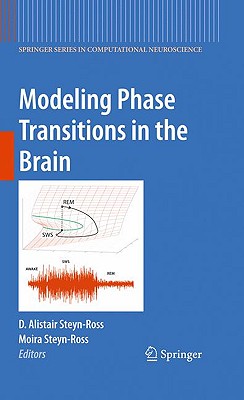
Modeling Phase Transitions in the Brain(Springer Series in Computational Neuroscience)
大脑相变模型
神经病学
¥
3766.25
售 价:
¥
3013.00
优惠
平台大促 低至8折优惠
发货周期:外国库房发货,通常付款后3-5周到货
作 者
出 版 社
出版时间
2010年02月01日
装 帧
精装
页 码
306
语 种
英文
综合评分
暂无评分
- 图书详情
- 目次
- 买家须知
- 书评(0)
- 权威书评(0)
图书简介
Foreword by Walter J. Freeman.
The induction of unconsciousness using anesthetic agents demonstrates that the cerebral cortex can operate in two very different behavioral modes: alert and responsive vs. unaware and quiescent. But the states of wakefulness and sleep are not single-neuron properties---they emerge as bulk properties of cooperating populations of neurons, with the switchover between states being similar to the physical change of phase observed when water freezes or ice melts. Some brain-state transitions, such as sleep cycling, anesthetic induction, epileptic seizure, are obvious and detected readily with a few EEG electrodes; others, such as the emergence of gamma rhythms during cognition, or the ultra-slow BOLD rhythms of relaxed free-association, are much more subtle. The unifying theme of this book is the notion that all of these bulk changes in brain behavior can be treated as phase transitions between distinct brain states.
Modeling Phase Transitions in the Brain contains chapter contributions from leading researchers who apply state-space methods, network models, and biophysically-motivated continuum approaches to investigate a range of neuroscientifically relevant problems that include analysis of nonstationary EEG time-series; network topologies that limit epileptic spreading; saddle--node bifurcations for anesthesia, sleep-cycling, and the wake--sleep switch; prediction of dynamical and noise-induced spatiotemporal instabilities underlying BOLD, alpha-, and gamma-band Hopf oscillations, gap-junction-moderated Turing structures, and Hopf-Turing interactions leading to cortical waves.
本书暂无推荐
本书暂无推荐















